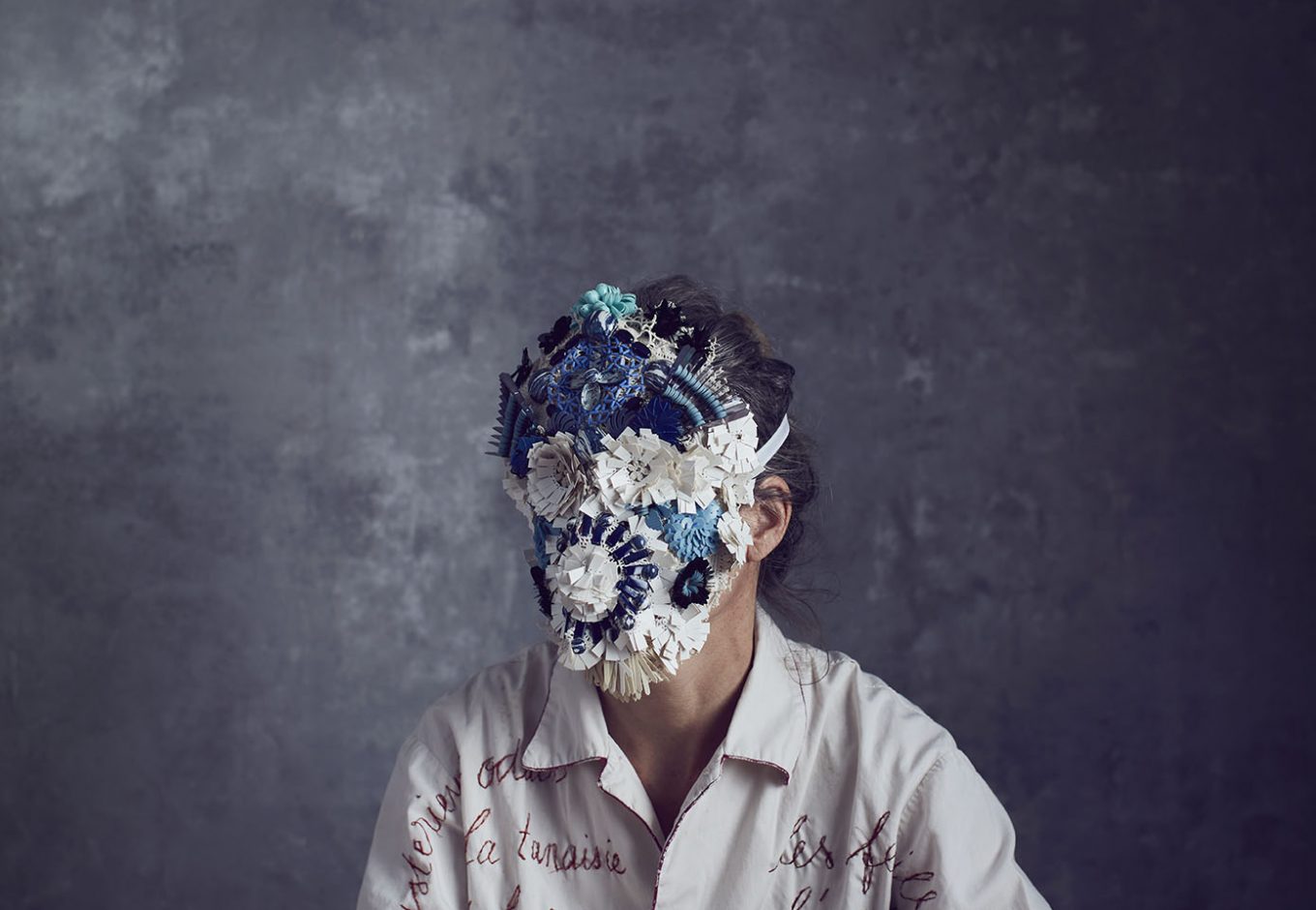Emma Cassi's textile masks, a tribute to Hilma Af Klint
Textile artist Emma Cassi is inspired by the work of fashion designer Dries Van Noten and learned embroidery on her own. After creating her brand of embroidered jewelry, she now designs fabric pots, painted herbariums, long silk panels and masks… With her masks made of pearls, lace and flowers, she highlights the tradition of craftsmanship and the work of artist and abstract pioneer Hilma Af Klint, to whom she pays homage in Broder l’Invisible.
Where does your attraction for textiles, crafts and flowers come from?
My love for fabric is tactile and comes from childhood: from my grandfather’s checkered handkerchiefs, to the old lace clothes my father found for his sister’s folk club… In the small village where we lived my grandfather ran a sawmill and my father a car junkyard. I spent my free time there. It was in the wooden squares, the fragments of glass and scrap metal that I had fun. Today, I feel close to arte povera artists or designers who recycle plastic, like Serge Attukwei Clottey, even though the materials I use are softer and more elegant. As for my relationship with nature and flowers, the link is more intimate. I studied garden art and landscape drawing at the Beaux-Arts alongside the philosopher Gaëtane Lamarche-Vadelle and the artist Marc Camille Chaimovicz.
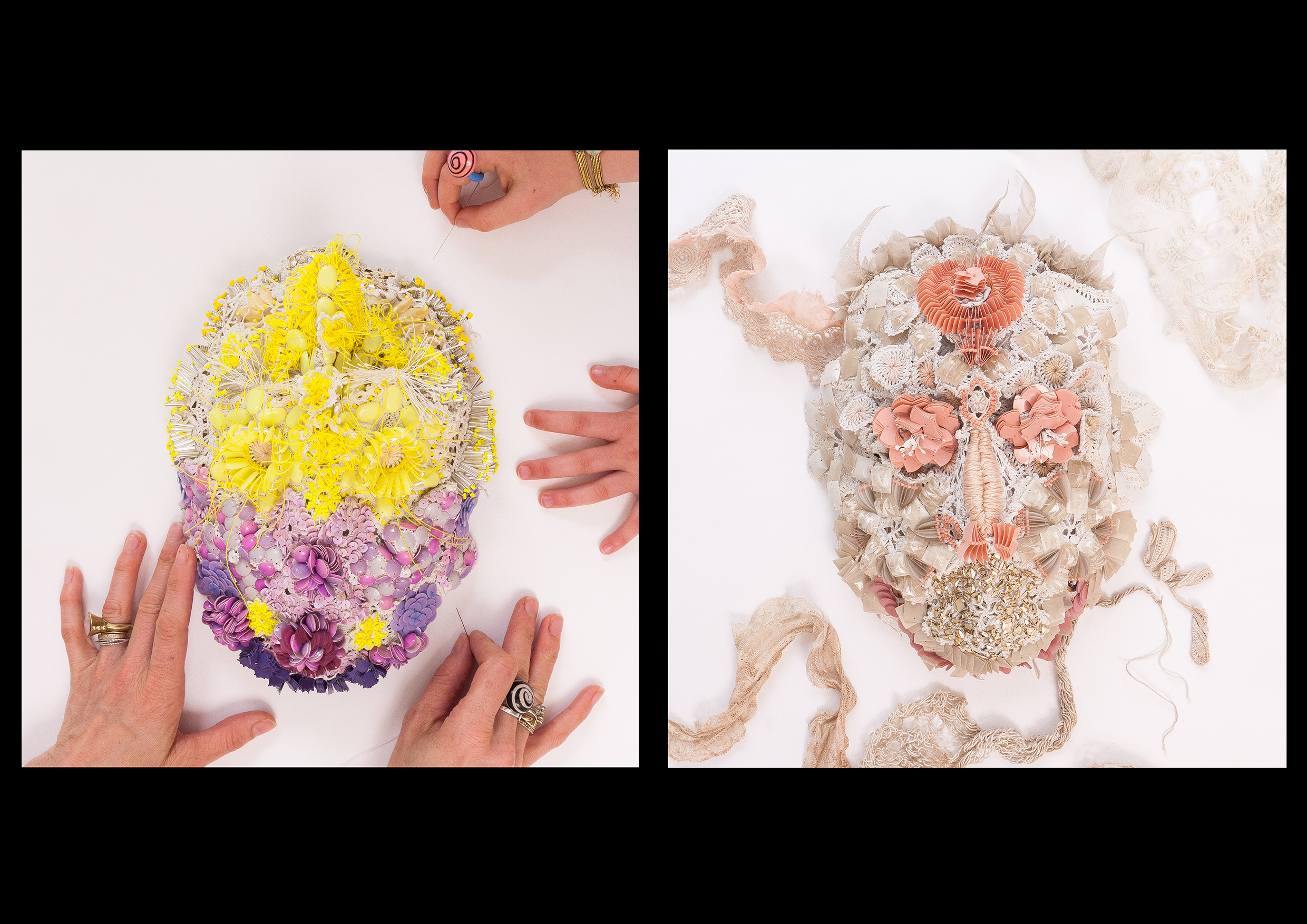
With the “Broder l’Invisible” series of masks, you tell a story.
These masks are specially created for the London Han & Lock Embroidery Prize. The theme required choosing an artist and an emblematic figure, then creating a free embroidery. I chose Hilma Af Klint, a pioneer painter of abstract art, and Ada Lovelace who produced the first real computer program. The masks of Broder l’Invisible illustrate the 4 stages of life: youth, adolescence, adulthood and old age, like the paintings The ten largest by Hilma Af Klint. antique lace medallions and crochet patterns that I embroidered with vintage 50s and 70s sequins from Hammersmith vintage fair, as well as antique beads. To interpret the enigmatic symbols, logarithmic spirals and floral imagery of Hilma Af Klint, I didn’t plan anything. I embroidered all the lace pieces little by little. I built faces of all ages, letting myself be guided by the paintings and the effect that Hilma’s works had on me…
Through these masks you therefore revisit textile craftsmanship. In what ways?
I use old lace found in markets, crochet with holes, stains. The smallest piece of rag is a treasure. The vintage glitter of my masks is harder to find, very rare, often made in France. I have met fabric collectors and costume designers who have helped me get hold of these colorful little 1940s gelatin bits for older ones. My vision of craftsmanship is close to that of permaculture: doing with what we have around you, taking the time to see the work evolve, recycle it to transform it. I like the freedom and the simplicity of an artisanal approach. You don’t need a lot of money, just your hands and the raw materials. The tactile experience, that of the awareness of time, occurs while I embroider with each passage of the needle to hold the thread…
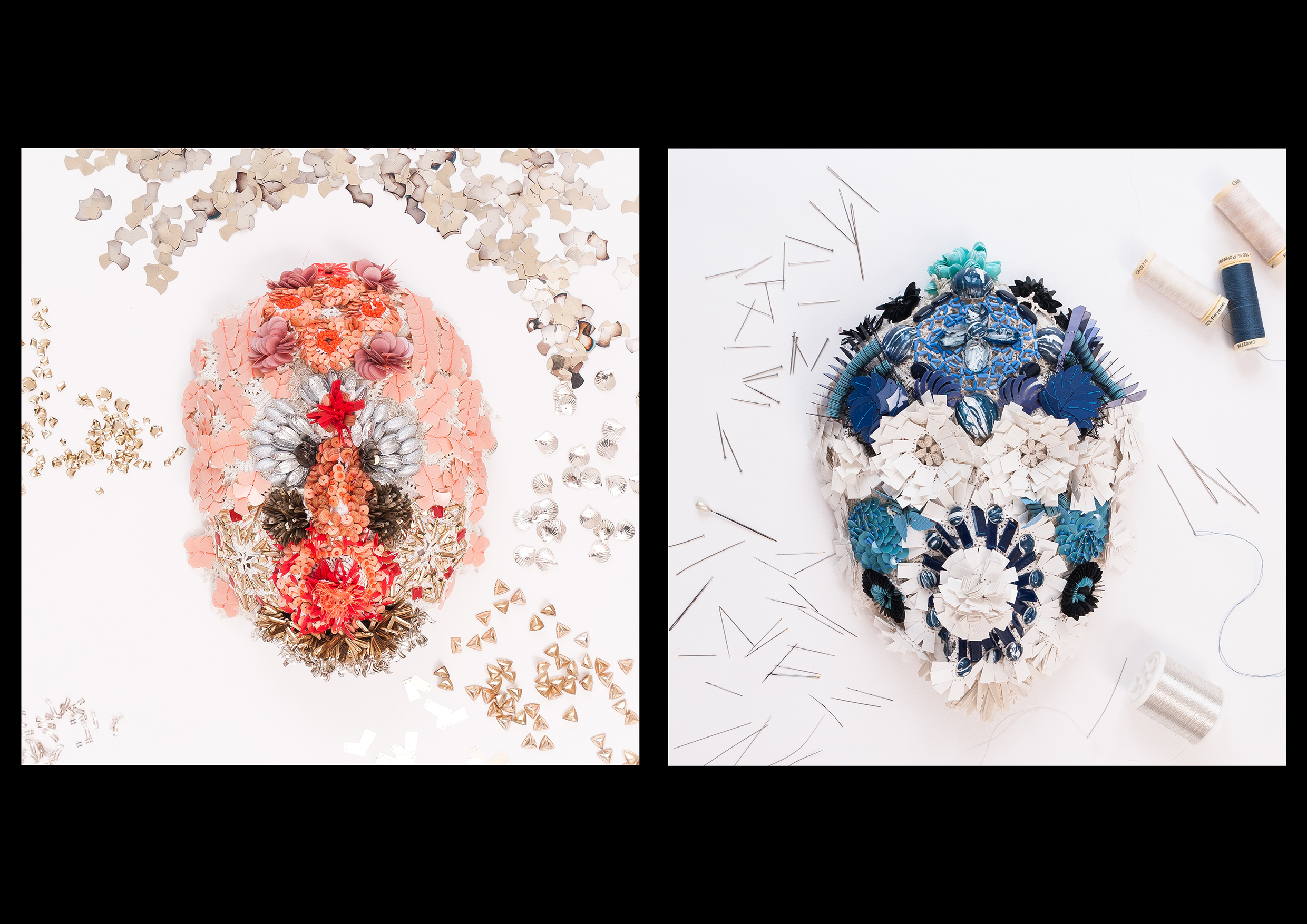
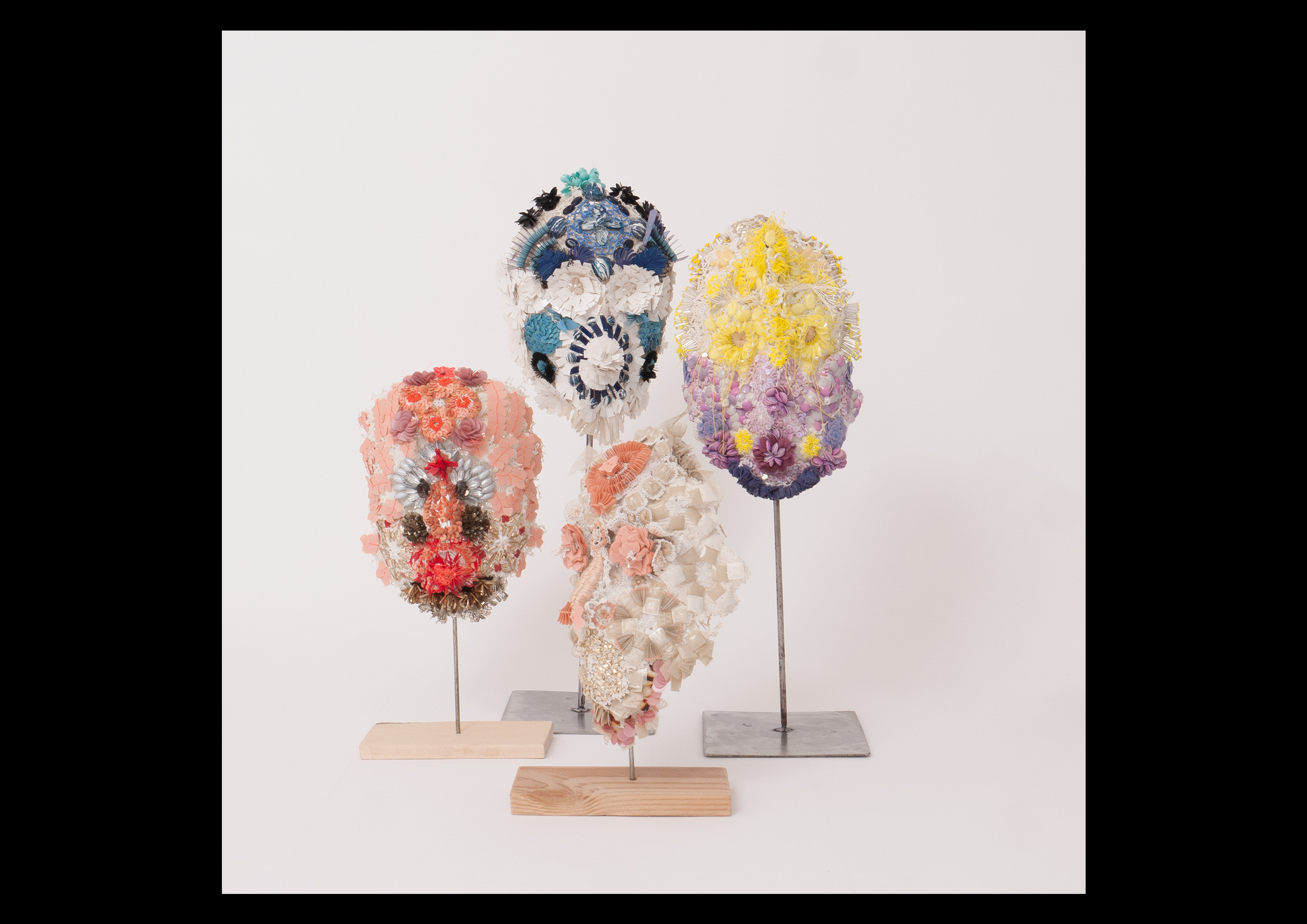
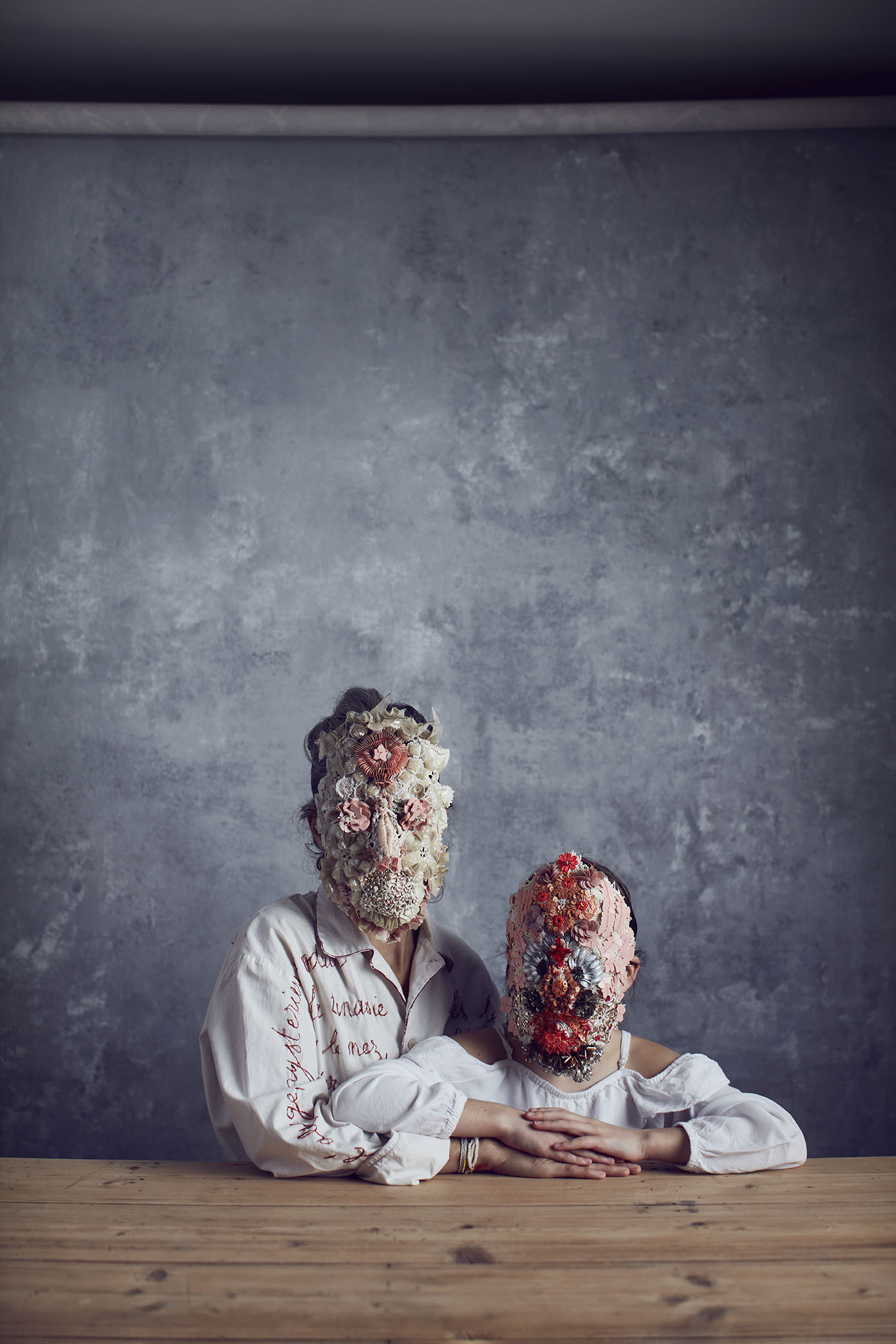
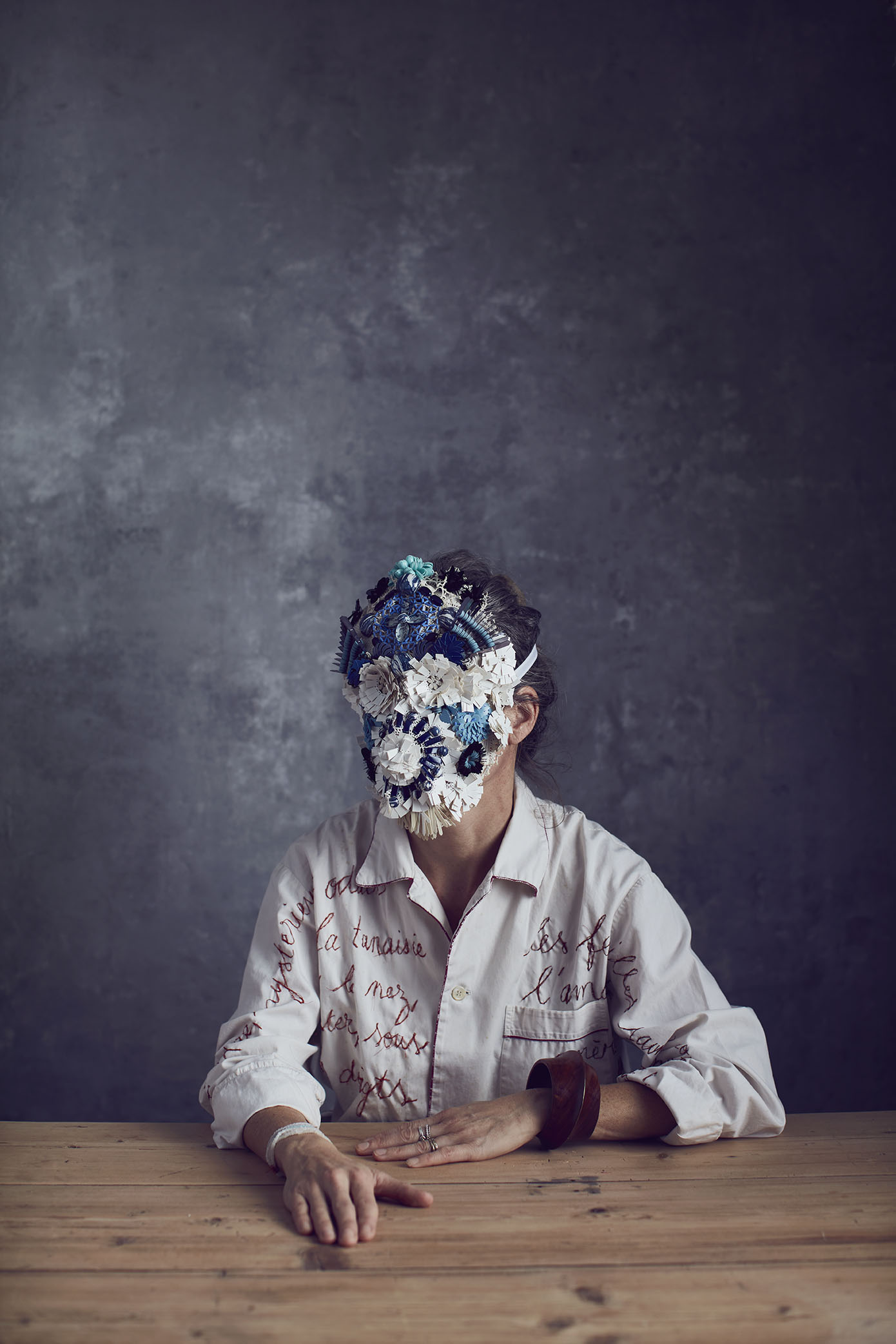

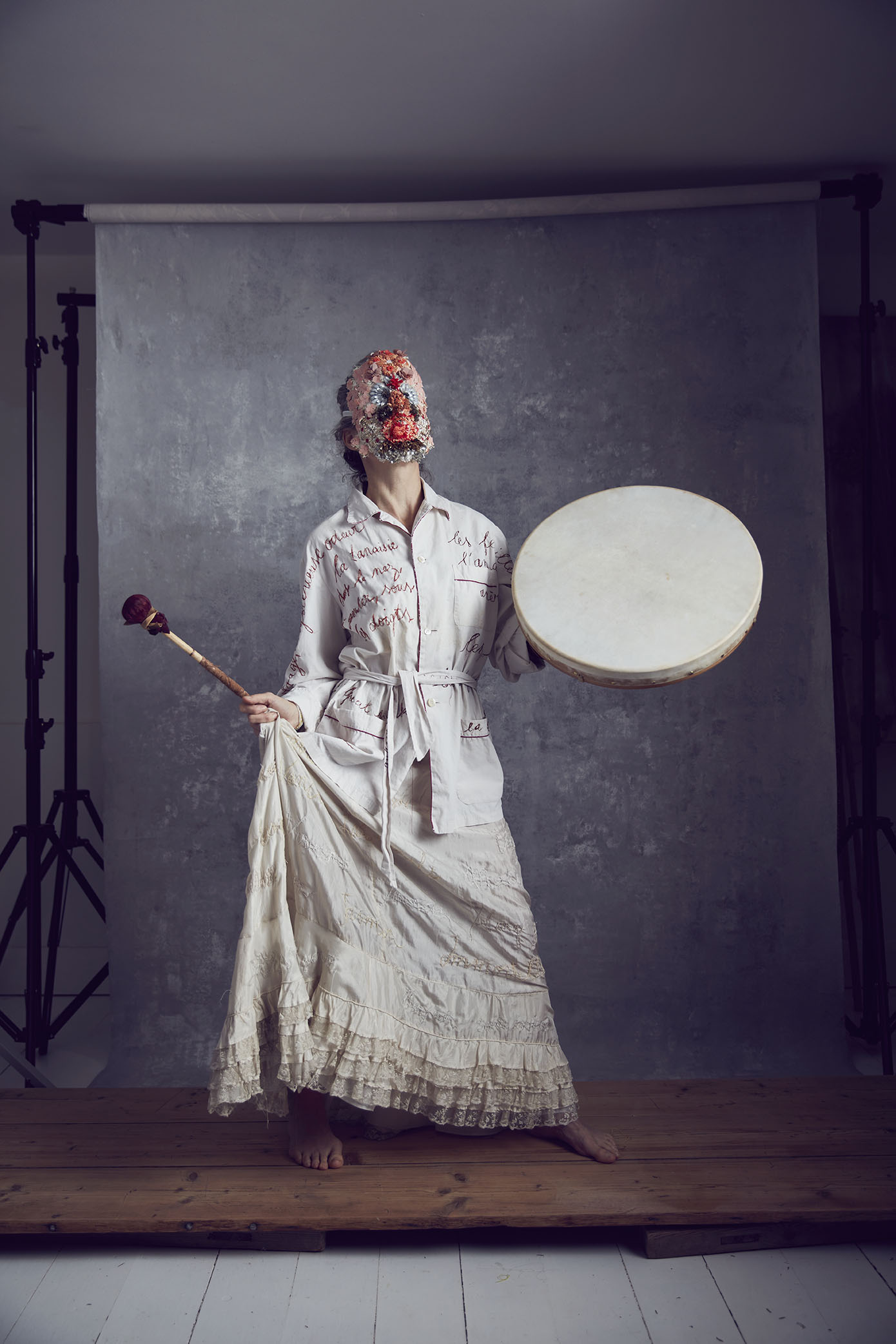
Emma Cassi’s website: emmacassi.com
Emma Cassi’s instagram: @silkbyemmacassi
Alun Callender’s website: aluncallender.com
Alun Callender’s instagram: @aluncallenderphoto
© Emma Cassi & Alun Callender
